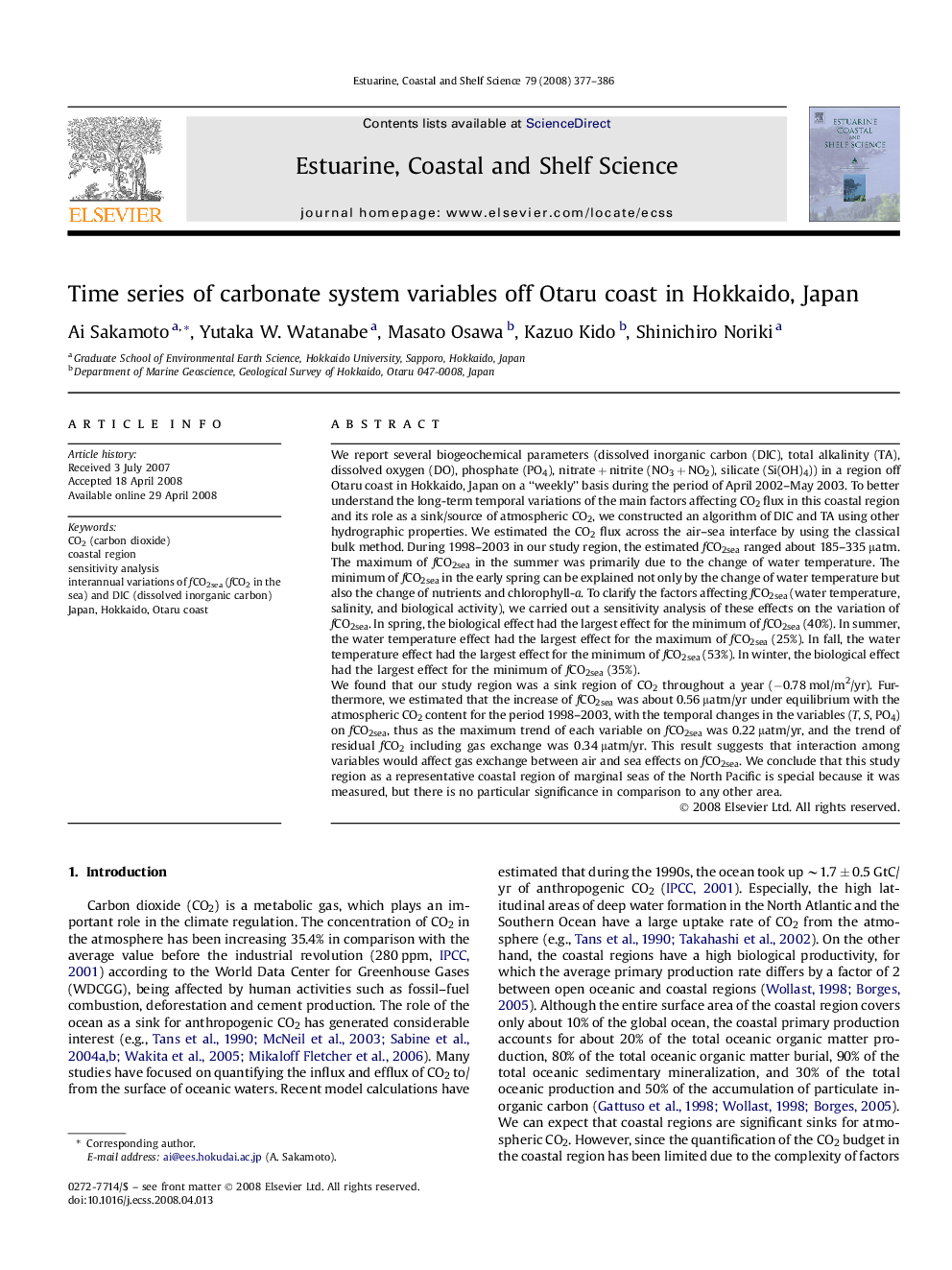| Article ID | Journal | Published Year | Pages | File Type |
|---|---|---|---|---|
| 4541473 | Estuarine, Coastal and Shelf Science | 2008 | 10 Pages |
We report several biogeochemical parameters (dissolved inorganic carbon (DIC), total alkalinity (TA), dissolved oxygen (DO), phosphate (PO4), nitrate + nitrite (NO3 + NO2), silicate (Si(OH)4)) in a region off Otaru coast in Hokkaido, Japan on a “weekly” basis during the period of April 2002–May 2003. To better understand the long-term temporal variations of the main factors affecting CO2 flux in this coastal region and its role as a sink/source of atmospheric CO2, we constructed an algorithm of DIC and TA using other hydrographic properties. We estimated the CO2 flux across the air–sea interface by using the classical bulk method. During 1998–2003 in our study region, the estimated fCO2sea ranged about 185–335 μatm. The maximum of fCO2sea in the summer was primarily due to the change of water temperature. The minimum of fCO2sea in the early spring can be explained not only by the change of water temperature but also the change of nutrients and chlorophyll-a. To clarify the factors affecting fCO2sea (water temperature, salinity, and biological activity), we carried out a sensitivity analysis of these effects on the variation of fCO2sea. In spring, the biological effect had the largest effect for the minimum of fCO2sea (40%). In summer, the water temperature effect had the largest effect for the maximum of fCO2sea (25%). In fall, the water temperature effect had the largest effect for the minimum of fCO2sea (53%). In winter, the biological effect had the largest effect for the minimum of fCO2sea (35%).We found that our study region was a sink region of CO2 throughout a year (−0.78 mol/m2/yr). Furthermore, we estimated that the increase of fCO2sea was about 0.56 μatm/yr under equilibrium with the atmospheric CO2 content for the period 1998–2003, with the temporal changes in the variables (T, S, PO4) on fCO2sea, thus as the maximum trend of each variable on fCO2sea was 0.22 μatm/yr, and the trend of residual fCO2 including gas exchange was 0.34 μatm/yr. This result suggests that interaction among variables would affect gas exchange between air and sea effects on fCO2sea. We conclude that this study region as a representative coastal region of marginal seas of the North Pacific is special because it was measured, but there is no particular significance in comparison to any other area.
